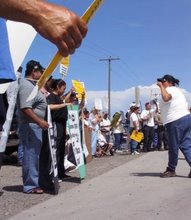Why is US labor in decline and how can the situation be turned around? Kim Moody, a prominent Marxist participant and commentator in the US labour movement over the past three decades has produced a coherent answer to these questions, with implications of the revival of trade unionism everywhere.
The book explains why US labour went into decline, what the current state of play is in the unions and points to potential signs of revival.
Why US labour went into decline
The absolute membership of US trade unions peaked in 1980 at 20 million members. Union density however peaked a lot earlier; in 1953 unions accounted for nearly a third (32.5%) of non-agricultural workers.
By 2005 US unions organised just 12.5% of the workforce, with 16.5 million members. In that year the labour movement split down the middle, when the Change to Win coalition broke away from the AFL-CIO trade union centre, taking some six million members with it.
Moody’s explanation starts from the worsening economic situation from the 1970s and after the election of Ronald Reagan, the harsher political climate, which made labour’s ability to fight more difficult. The economic situation is described as the “Great Transformation” – a fall in the rate of profit led to intensified competition, the acceleration of global economic integration, outsourcing, new technologies, lean reorganisation – what Moody rightly describes following Marx as the concentration and centralisation of capital.

No comments:
Post a Comment